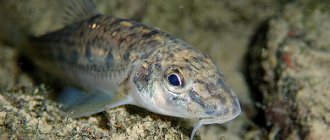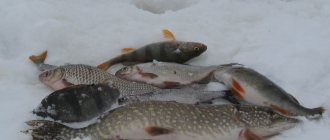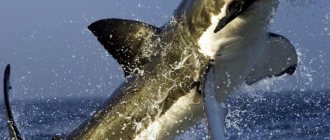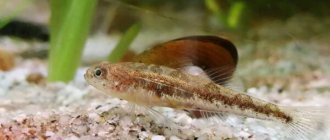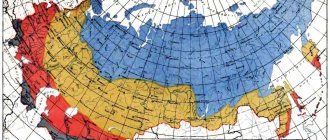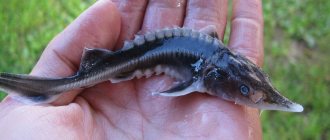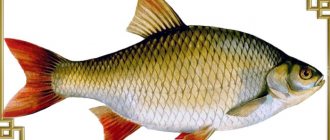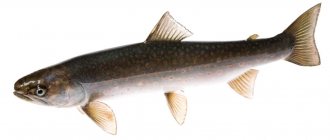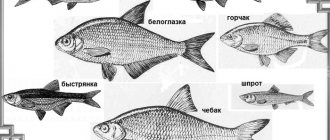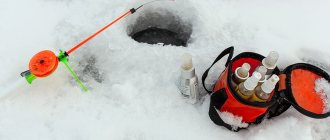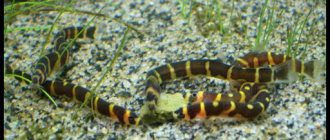⚓ Habitats, diet, spawning
Reservoirs in which char is found: small ponds, small rivers, streams. The likelihood of this fish is higher in flowing waters. She tries to stay near the bottom, hiding in snags and boulders. The diet of char includes mollusks, worms, and fish eggs.
Spawning occurs in April-May. In fish going to spawn, the pelvic fins are covered with the so-called “pearl rash.” The eggs are “incubated” on the stones. In this case, the clutch is protected by the male. The loach reaches sexual maturity in the second or third year of life.
Fish of the Kamchatka region
But, firstly, they worked at random, not having a complete understanding of the boundaries of the bottom depression, and secondly, neither boiled caviar nor its imitation - blende - were of interest to the fish that day. After I took two more trophies before their eyes, people lost interest in the process. At some point, the grip stopped, and I installed Team Esko, which had worked so well the week before.
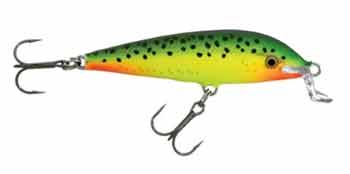
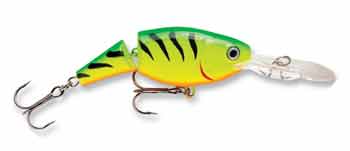
Wobbler Jointed Shad Rap The final ones, despite the “bronze” nature of their bodies - whatever one may say, they had to overcome a considerable distance - were in excellent fighting shape. When fishing for these beauties, the Fire Line 0.12 mm braided line, screwed onto a seasoned Nexave300R spool, rang and sang, and the 2.7-meter Beast Master rod bent spectacularly without squeaking even once...
⚓ Practical aspects of fishing
Char has no commercial value. At the same time, this is a popular species of live bait, for which you can use a float rod. The more sensitive the tackle, the more likely a good catch is.
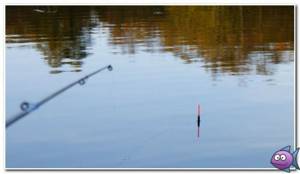
Spawned fish are actively biting. Fishing is more interesting in 20-degree water. By the way, at this water temperature, the char bites throughout the day. But as soon as the water warms up to 23 degrees, which happens in the summer, the char stops biting during the day.
Search for a predator
When starting a search for char, the first thing you need to do is inspect the area of the reservoir where there is a relatively flat bottom covered with stones. When studying the water area, do not forget that char does not tolerate bright light. So on a sunny day it can only be found at a depth of at least 6-7 m. In this case, the use of fly fishing gear will not bring any results. Cloudy weather, on the contrary, can contribute to a good catch, since the fish are in shallow rocky areas. There, char hunts for juvenile grayling and whitefish. To more accurately determine the location of the predator, you just need to carefully observe the water surface. The fish makes its presence known by various splashes and movements, collecting insects from the surface and chasing the fry. In addition, you can detect char with maximum accuracy in spawning streams. Of course, fishing during the spawning season is prohibited, but after this period a certain part of the predators descends the stream and remains to live near its mouth. That is why such places are more popular among fishermen.
⚓ Fishing gear
! Advice
When choosing a fishing rod, at least pay attention to a model of medium length, but not to the detriment of its sensitivity and strength. Why? The fact is that char is often found in coastal vegetation. It’s better to have two tackles in your arsenal: a long one and a shorter one.
In terms of preventing snags, it is useful to install a leash on the main fishing line. The recommended thickness of the fishing line is 0.2 mm, the leash is 0.1 mm. Fishing will be more effective if you include a light and sensitive float in your fishing rod rig. In our case, we need ordinary float tackle without any frills.
As for hooks , both round and semi-round options are suitable for char. In the first case, short, medium and long forends, bent or straight points are acceptable. In such hooks, rings, spatulas or ribbed heads are provided for tying them to the fishing line. When using a metal leash, you need to place your bet on a hook with a ring.
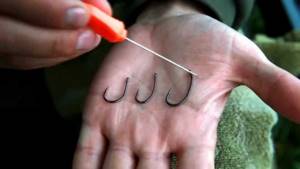
The second group of hooks includes products with a slightly flattened transition connecting the forearm and the top of the bow. More often on the shelves there are products with a bent tip, less often - flat ones, without a bent tip.
If you decide to make a float , then choose hard foam or cork as the material. What are the main advantages of homemade floats. Firstly, they are easy to move along the line. Secondly, a float made from the above materials is quickly attached and removed and responds to the most careful bite. There were some drawbacks: poor performance in currents, frequent breakdowns.
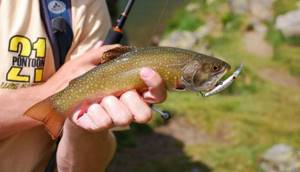
The average length of the part of the float protruding above its body is 3 cm, the lower part is 5 cm. The materials of the antenna and keel of one float are different. For reservoirs with a current, floats with a long keel are most suitable, for reservoirs with standing water - with a short one. Also in the second case, a float with a wide surface part is preferable.
The sinker is a simple olive, the weight of which is selected so that the nozzle is as close to the bottom as possible.
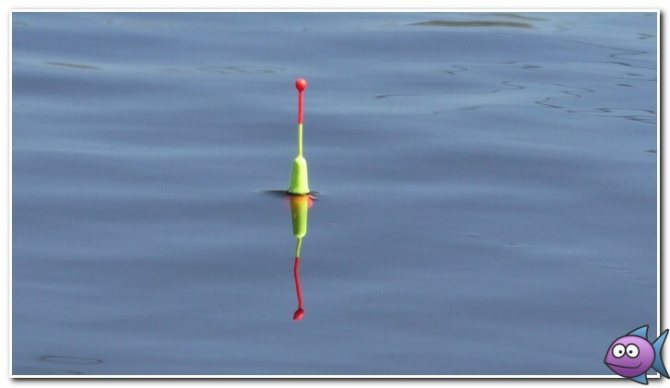
Fish of the Kamchatka region
One thing was reassuring: none of our competitors had any noteworthy successes. There was a reason to return to the car and look for another place, but the time factor came into force: we would lose the faithful two hours and would not get a bite anywhere. We decided to drag the inflatable boat upstream and get to the island (6), adjacent to the right bank (4), and try our luck from it in the channel (1) and in the main bed (2). Scheme 1

- – duct;
- – main channel;
- - left Coast;
- – right bank;
- – a belt with moderate currents and acceptable depths;
- - island;
- - pit
We pulled up reluctantly and were unpleasantly surprised that the current pressed the jets close to the shoreline of the island, forming a long riffle. We tried to look for luck in a narrow but relatively deep channel. After changing several turntables, I realized that today they did not arouse gastronomic desires in the fish, and I went to the lower end of our refuge. The sun was already in full control, and the bottom of the river was visible at a considerable distance. About 20 meters below the island, the boundaries of a certain depression were vaguely visible, and the movement of the spoon confirmed this: where expected, it slightly scratched the edge of the pit with its tees (7). After analyzing the situation, I came to the conclusion: if there are fish in this area, then only in this area. The only question is how to get it from there. In this situation, one couldn’t have looked for anything better than a wobbler.
⚓ Bite and hook
On a river with a strong current, it is not difficult to detect a bite, since in this case the fish grabs it more boldly than, for example, in standing water.
In stagnant reservoirs, the char, due to its caution, manages to expose the hook, which goes unnoticed by the inexperienced eye.
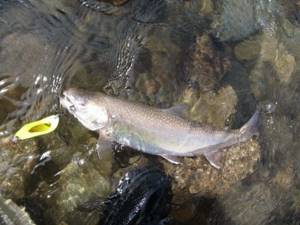
The hook will be timely if it coincides with the start of the float's movement. You need to hook quickly, but lightly, which is explained by the small size of the loach.
When to catch char
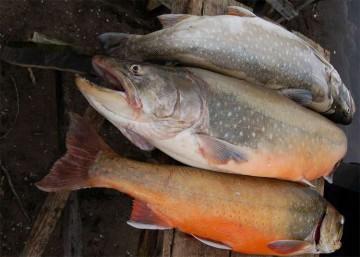
Char fishing occurs all year round, both in open water and from ice. At different times of the year, different gear is used to catch this fish, so in open water char is caught with a spinning rod, a float rod and fly fishing, and in winter, respectively, with a winter fishing rod, mainly with a spoon.
Char is most active in the morning and evening, during sunset and sundown. It is during these hours that you can expect the greatest number of bites. At other times, the activity of the loach subsides, but nevertheless the bite does not stop.
Migratory char begins to enter the rivers around June-July, but its fishing is prohibited, so if you still catch this fish, you will have to release it, trying not to damage it when freeing it from the hooks.
The search for char in a reservoir and, sometimes, the bait used depend on the time of year and fishing season. Below we will discuss where to look for char and what bait and tackle to use to catch it.
⚓ Nozzles
Char willingly goes for maggots; this fish does not disdain a worm, which is first torn into pieces. According to experienced fishermen, maggots are more effective.
For those who are not in the know, a maggot is a descendant of a blue fly (the so-called blowfly), which is in the larval stage of development. By the way, maggots are easy to obtain. To do this, in the spring it is enough to leave a dead animal somewhere, in which the flies will lay eggs, and in a maximum of a week maggots will appear.
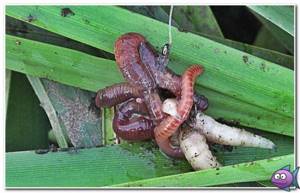
A less harsh method is to use purchased meat as a substrate for flies and their offspring. True, you will have to wait for it to rot. The way to clean such bait from rot is to pass the larvae through the sand two or three times. You can store the larvae in a bucket until the first frost, which is one of the advantages of the bait. To do this, the larvae need to be given a cool place.
! Advice
To make the maggot more mobile in the water and, accordingly, more attractive to fish, pass the tip through the skin of the bait. It is important that the sting is on the outside.
Winter fishing on the river
But this is where the loach is located, ready to immediately pick up the bait. A sugar striker is a tin cone with a diameter in the wide part slightly smaller than the diameter of the hole. In order to overcome the dense layer of slush, the cone is weighted with lead at 2/3 or 3/4 of its height. It contains a fastening for the cord, and on the free side surface there are holes for drainage of water scooped out along with the sludge. To prevent the cord from slipping in your hands, knots are made on it every 40-50 cm. The shoe punch is forcefully lowered into the hole, 15-20 cm of sludge is punched through, and what has fallen into the cone is thrown onto the ice, and this is done as many times as necessary to pierce the obstacle to the end. The slush moves with the flow, so during fishing you have to periodically clean the holes. The capricious Kamchatka winter turns the ice into something incredible: due to repeated thaws and frosts, already in December it resembles a layer cake, some layers of which may be generously flavored with wind-blown sand. In such conditions, when drilling a hole, you can easily remove the ice drill knives from the formation. Therefore, it doesn’t hurt to have spare ones with you. The depths at the char fishing points are different. In areas of Avacha above Yelizovo, they are, as a rule, small: during the first ice stage, anglers fish only a meter-long area. Only in channels under steep, washed-out banks does it increase to one and a half meters. But there is a strong current here, and you have to extend the line a meter more than the depth. As you move downstream, the depths increase. In and near the Elizovo city limits, char is searched for in two-meter holes, and in the lower reaches one can find vast deep areas with three-meter depths and relatively calm currents... Even a medium-sized char can give the fisherman a magnificent range of sensations. A 200-gram char, having picked up the bait from the raid and stunnedly poked into the dense slush, sometimes turns into an unimaginable weight, and the fisherman, who struggles with it much more than with the fish, experiences disappointment - so much fuss because of some small thing... But if on the hook a half-kilogram river robber sits, then there will be enough emotions for a long time, and there will be something to admire. It happens that two predators grab the hooks at once, and then the fishing pressure rejoices. Sometimes a kunja sits on the hook. The bite of this fish differs from the char: in the initial period, there is a weight hanging on the line, and it seems that it is not a fish, but a hook. But after a few seconds it comes to life - this predator rushes down and to the side. Decent-sized kunja, as well as char, should under no circumstances be dragged along. In this case, breakage of the tackle is inevitable. You should pull yourself together and act extremely cleanly, if necessary, hand over a couple of meters of fishing line to the raging robber, “test it for use” and, if the fish is still full of strength and is ready to continue the fight, meet its “wishes”, throwing it off the reel as much fishing line as needed. Of course, this can be fraught with consequences: a fish performing underwater pirouettes can confuse neighboring gear or find a snag, but the fisherman has no choice. A minute will pass, two, three, and it will become clear that the opponent’s strength is not unlimited. With all its power, the kunja will run out of steam, and then all that remains is to adjust the desired pace and, without forcing events, bring the fish to the lower edge of the hole. If the diameter of the hole is larger than the head of the hooked fish, then the winner is determined. But in general, nothing is clear until the trophy is on the ice... With winter gear on Avacha, char is caught over a fairly long stretch: from the upper reaches, near the village of Severnye Koryaki, to the lower reaches, near the left tributary of the Aloy River, near the right channels of the tundra river Kholmovitka. The winter fisherman is omnipresent, and if there is an access to the river, then a company of ice workers will certainly gather there and poke holes in the ice in search of char.
Share on social media networks
To My World
0
Tweet
RќСЂР°РІРёС‚СЃСЏ
‼ Top 10 tips for using, storing (and more) hooks
1. Do your hooks keep rusting? Do you have to buy new sets before each season? There is a solution to this problem. Just pour starch into a box with hooks. You can do it differently. Take a piece of foam rubber, soak it in machine oil, squeeze it out, and insert hooks into it. As you can see, everything is simple.
2. Before tying the hook, soak the fishing line in warm water. It will become softer and, accordingly, more pliable. In addition, the drying knot is tightened tighter.
3. When going fishing with vegetable baits, make sure that the fishing rod is equipped with a hook with a short shank. Animal baits work more effectively on a hook with a long shank.
4. To make the purchased hook more catchy, heat it up and turn the ring 90 degrees.
5. You need a really strong hook, flatten it on the sides. Fire, a hammer and an anvil will help you with this task.
6. Imagine how upset you will be when the only hook becomes dull during an active bite. This problem can be solved with the help of a matchbox, in particular the sulfur that is applied to it. It can be used as fine sandpaper.
7. Finish the inner surfaces of metal containers with soft material. After this, the hooks will not become dull.
8. The closer the color of the hook to the color of the bait, the more active the bite.
9. When going home, make sure that the hooks are thoroughly cleaned of any remaining bait, as they provoke a corrosion process.
10. High temperature, for example, during soldering or heating, negatively affects the strength of the hook. In order to prevent such a problem, you need to stick it in and soak it in a raw potato for five to ten minutes.
Fishing for char with a spinning rod in summer
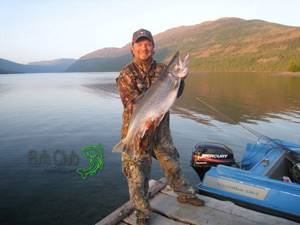
To catch char, we will need a fast-action spinning rod with a test in the lower limit of 8-10 g and the upper limit of 35-40 g. Height from 2.70, since fishing will be done from the shore. We will need an inertia-free reel of size 2500 or 3000 according to the Shimano classification and a cord with a breaking load of 7-10 kg.
There is no need to be shy about the size of the baits. Char, pink salmon, palia and other representatives of this family are not indifferent to large-sized baits. The range of colors of baits can be very diverse. From solid silver colors to fluorescent colors. When catching char with a spinning rod, you can use rotating, oscillating spoons and wobblers.
It is often difficult to choose the right bait for catching char with a spinning rod. In some cases and in some territories, char prefers heavy oscillating spoons, in others it prefers “mirror bullets” known to pike fishermen, and sometimes even the most primitive “spinners” with feathered tees. Cases of catching char on a sinking wobbler have also been described. So it’s best to select spinning baits by observing local fishermen.
